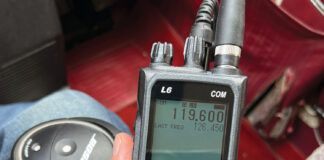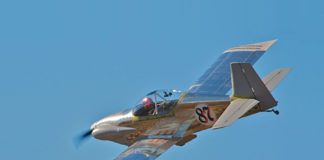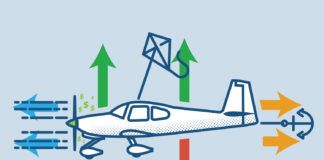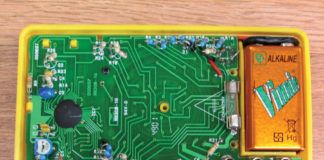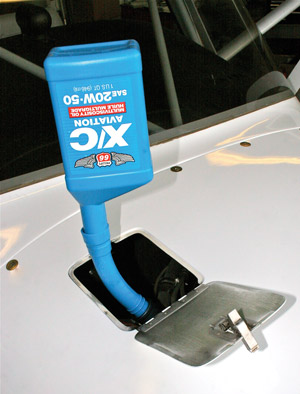
We’re taught that engine oil lubricates seals, carries away heat, prevents corrosion and cleans. But there’s much more to learn. Confusion about what kind of oil is best, how often oil should be changed, when oil with an anti-scuff additive should be used and how much oil is enough have generated many hours of hangar flying-both among pilots and owners of store-bought aircraft and among builders of Experimentals.
Let’s knock back a few basics, first. Airplane engines are oil consumers and can gulp down as much as a quart of oil every two flight hours and still be airworthy. Its normal for an airplane to drip a few drops of oil on the hangar floor after a flight. Ideal oil-consumption rates are also open to debate, with some pilots more tolerant of a lube-swiller and others thinking that 1 quart in 20 hours is a good target.
All aircraft oils are mineral based, yet some multi-grade oils also have a synthetic component. Although acceptance of synthetic oils is common in other industries, some highly regarded engine shops don’t want any synthetic oils in their engines.
If a can of oil has a notation that it complies with Mil-L-6082 (or SAE J1966) if its a mineral oil, or Mil-L-22851 (or SAE J1899) if its an ashless dispersant oil, it can be safely mixed with other brands of aircraft oil. This also applies to mixing single-grade and multi-grade oils. Oil-change intervals are defined by hours flown or calendar time, and the filters must be cut open for examination at each change. We’ll have a full discussion of how to do this and what to look for next month.
How Much Oil Is Enough?
Early aircraft engine certification (Aeronautics Bulletin 7A, 1934) rules required 1 gallon of oil for each 16 gallons of fuel capacity. If this rule were still in force, the Lycoming on the front of your RV-7 would likely have a 14-quart instead of an 8-quart sump.
Current engine oil capacity rules mandate that the lubrication system of the engine must function properly in all flight attitudes and atmospheric conditions in which the airplane is expected to operate. The rule goes on to say that wet-sump engines-meaning virtually all engines likely to be in Experimentals save for a few high-end auto-engine conversions-must be able to achieve this when one-half of the maximum lubricant supply is in the engine.
The Type Certificate Data Sheet (TCDS) for the 310-horsepower, six-cylinder Continental IO-550-N-the engine popular with builders of Lancairs and Velocitys that just happens to also be installed in the Cirrus SR-22-cites an 8.5-quart sump capacity with 5 quarts usable when a 16 nose-up attitude isn’t exceeded, and 4.5 quarts usable when a 10 nose-down attitude isn’t exceeded.
Note that the sump capacity of the 180-hp Lycoming IO-360 is only half a quart less than the much more powerful IO-550 in the SR-22. This supports the fact that todays aviation oils are more than adequate to protect all engines if no oil starvation occurs.
Topping off an oil sump often causes a rapid oil discharge out of the crankcase breather tube. This oil venting takes place until the engine oil level has dropped to the level where internal crankcase pressures and venting are equalized. At this oil level sweet spot there’s enough oil to provide adequate lubrication and cooling, yet not so much that excess venting occurs. Every installation, even in certified aircraft, is different. The key is to test and document your installation to find this happy place.
As you’re doing so, consider that there are only two oil levels that matter. Enough and not enough. As shown in the certification mandates, levels down to half of the maximum level are sufficient, especially during straight and level flight with gradual climb and descent deck angles.
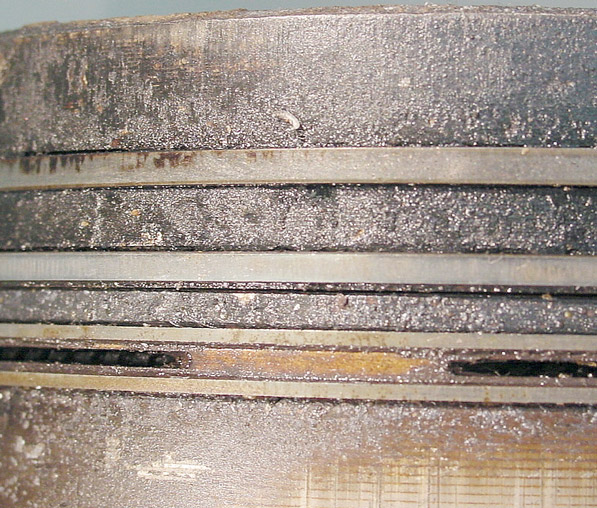
Oil Primer
The most common oil types are mineral oils and ashless dispersant (AD) oils. In AD oils the dispersant portion of the additive package performs two functions: It disperses wear particles and dirt, and it holds them in suspension in the oil between oil changes. Ashless dispersant oils are available in straight-grade and multi-grade weights. Those without an anti-scuffing additive include Aeroshell W80 and W100, and Phillips 66 Type A 100AD, 120AD and XC 20W-50.
In the past, it was generally accepted that an AD oil prevented or slowed the rapid wear between the piston ring/cylinder wall junction required for proper engine and cylinder break in. More is now known about AD oils and break in. However, depending on the source, the picture is still a little murky. Some engine builders insist on non-AD (mineral) oil, while Lycoming Service Instruction 1014 M Lubricating Oil Recommendations mandates that its turbocharged engines be broken in and operated on AD oil only. The instruction goes on to say that all other Lycoming engines must be broken in using mineral oil. Its thought that the reason Lycoming doesn’t endorse AD oil usage for breaking in non-turbo engines is there’s no guarantee that non-turbo engines will develop the combustion pressures required to fully seat the compression rings.
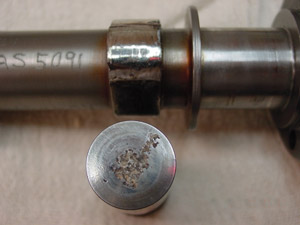
Mineral Oils
Oils without the AD component in the additive package are called mineral oils. These come in straight-grade and multi-grades viscosities, and are used to break in a new, overhauled or rebuilt engine, or after a cylinder change or top overhaul.
An engine is considered to be broken in when the oil consumption stabilizes. Break-in happens almost immediately in the case of ECIs Nickel+Carbide cylinders, within 5 to 10 hours on TCM and Lycoming factory cylinders, and within the first 25 hours for channel (porous) chrome cylinders. Mineral oils include Aeroshell 65, 80, 100, 120 and 20W-50 mineral oil; Phillips 66 Type M 20W-50, and Castrol S 65, S 80, S 100 and S 120.
Semi-Synthetic Oils
Although 100% synthetic engine oils work well in automobile engines and turbine aircraft powerplants, Mobil AV-1, the only all-synthetic reciprocating aircraft engine oil on the market, was withdrawn in 1995. Synthetic oils do not have as high a level of solvency as petroleum-based oils. Non-synthetic oils are best able to wash away (scavenge) contaminants until they’re removed by filtration or disposed of during an oil change.
Semi-synthetic aircraft oils are mixtures of petroleum base stocks and a synthetic stock consisting mainly of Polyalphaolefin (PAO). Aeroshells 15W-50 multi-grade oil is 50% synthetic, while Exxon’s Elite 20W-50 is 26% synthetic. Phillips 66 XC 20W-50 XC and 20W-60 XC multi-grade oils don’t contain any synthetic component.
The Anti-Scuffing Additive
In 1978, Lycoming introduced the O-320-H2AD engine to replace the O-320-E2D in the Cessna 172. The engine incorporated a new valve-train design. These engines werent quite ready for prime time and began spalling lifters in short order due to very high lifter-to-camshaft pressures. Lycoming airworthiness directive (AD) 80-04-03 R2 required owners to add LW-16702, an extreme pressure (EP) lubricant, to the engine at every oil change or every 50 hours, whichever came first.
The EP additive-originally Tricresyl Phosphate (TCP) now Triphenyl Phosphate (TPP)-and some valve train component changes resolved the lifter/camshaft scuffing problem. Lycoming service bulletin 471B states, We believe that some operators may not realize the importance of the use of this additive, and that, the additive helps maintain a film of lubricant to help protect the engine during initial start-up.
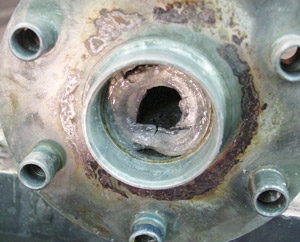
Today all aircraft reciprocating-engine oil manufacturers produce oils that contain an EP additive. These oils are marketed with statements in their advertising and on the oil can or bottle stating that using the oil is sufficient to comply with the requirements of the AD. On average, oil with the EP additive costs just less than $1 a quart more than non-EP oil. Oils with the anti-scuffing (EP) additive include Aeroshells W80 Plus, W100 Plus and 15W-50 multigrade; Exxon’s 20W-50 Elite, Phillips Type A 100AW and Castrol’s Aviator AD W65, W80, W100 and W120.
Oil containing anti-scuffing EP additives should only be used after an engine or cylinder is completely broken in. If oil with anti-scuffing additives is in the engine when a cylinder is changed, dump it and use oil without the anti-scuffing additive for the cylinder break-in period. Then go back to the anti-scuffing oil.
ASL CamGuard
Ed Kollin is the research engineer for Aviation Specialties Lubricants. He also worked for Exxon during the development of Exxon Elite multi-grade oil. After he left Exxon, Kollin worked for over a year to develop an aircraft reciprocating engine additive that protects engines. He calls it ASL CamGuard.
Kollin said his studies show that the cause of GA engine problems ranging from sticking valves in Lycoming engines to low compression in TCM engines is combustion blow-by that pushes fuel past the compression ring seal into the oil sump, where it dilutes and mixes with the lubricating oil. He believes that 99% of all GA engine deposits can be traced to this fact. The fuel in the oil oxidizes, forming deposits that lead to valve sticking and ring land contamination; further oxidation leads to the formation of the acids that cause corrosion. ASL CamGuard contains 20 times more rust inhibitors than top end multi-grade oils on the market, Kollin added.
During periods of inactivity the highly polished, high-carbon steels used in engines start rusting within days. Its not inactivity that shortens engine life, its internal engine rust caused by acids spread through the engine by circulating oil. CamGuard isn’t cheap, but its a lot less expensive than tearing an engine down due to inactivity-induced problems.
Change, Change, Change That Lubey Stuff
Oil doesn’t lose its lubricity, but it quickly becomes contaminated. Over time, acid-neutralizing additives will weaken, increasing the onset of corrosion. Oils oxidize. As oxidation increases, so does the formation of varnish and sludge. Oils become thicker, which increases the chance of sticking rings. Changing the oil is the only way to drain away harmful acids and restore the efficiency of the additive package.
Aircraft reciprocating-engine oil should be changed every four months unless 25 hours (if the engine has a pressure screen) or 50 hours (if it has an oil filter) have elapsed first. The 25- and 50-hour intervals are published by Lycoming and TCM, but many shops (and Kollin of CamGuard) recommend reducing the hour interval to 25 to 30 hours. Acids aren’t caught by an oil filter, Kollin said. The only way to remove acid from oil is to drain the oil.
Always get the oil up to operating temperature before draining. The only way to guarantee that the oil is at operating temperature is to fly the airplane. If you change your own oil, set up a funnel, sample bottle and bucket before departing on a trip. Dump the oil and take an oil sample as soon after landing as possible. This ensures a realistic analysis sample and an efficient and complete (acid) dump.
Viscosity
The final piece of the oil usage puzzle is selecting the correct viscosity. The engine manufacturers recommendations for oil viscosity are in the Pilots Operating Handbook (POH). TCM says to use aviation grade 65 (equivalent to SAE 30 weight) below 40 ambient temperature and aviation grade 100 (SAE 50) above 40. Multi-grade oils are approved at all temperatures.
Lycoming provides a more definitive outline in Service Instruction 1392, which addresses lubrication in the lubrication-sensitive H2AD engine. Multi-grade oils are again approved for all temperatures. However, with this engine SAE 50 AD oil is used in what Lycoming calls hot weather conditions, defined as air temperatures above 60 F; SAE 40 AD is for temps between 30 and 90 F, while SAE 30 AD is for temps between 0 and 70 F.
Todays engines were designed yesterday, and the lubrication requirements haven’t changed much over the years. But the lubricants and the information known about those lubricants have. Good thing.










